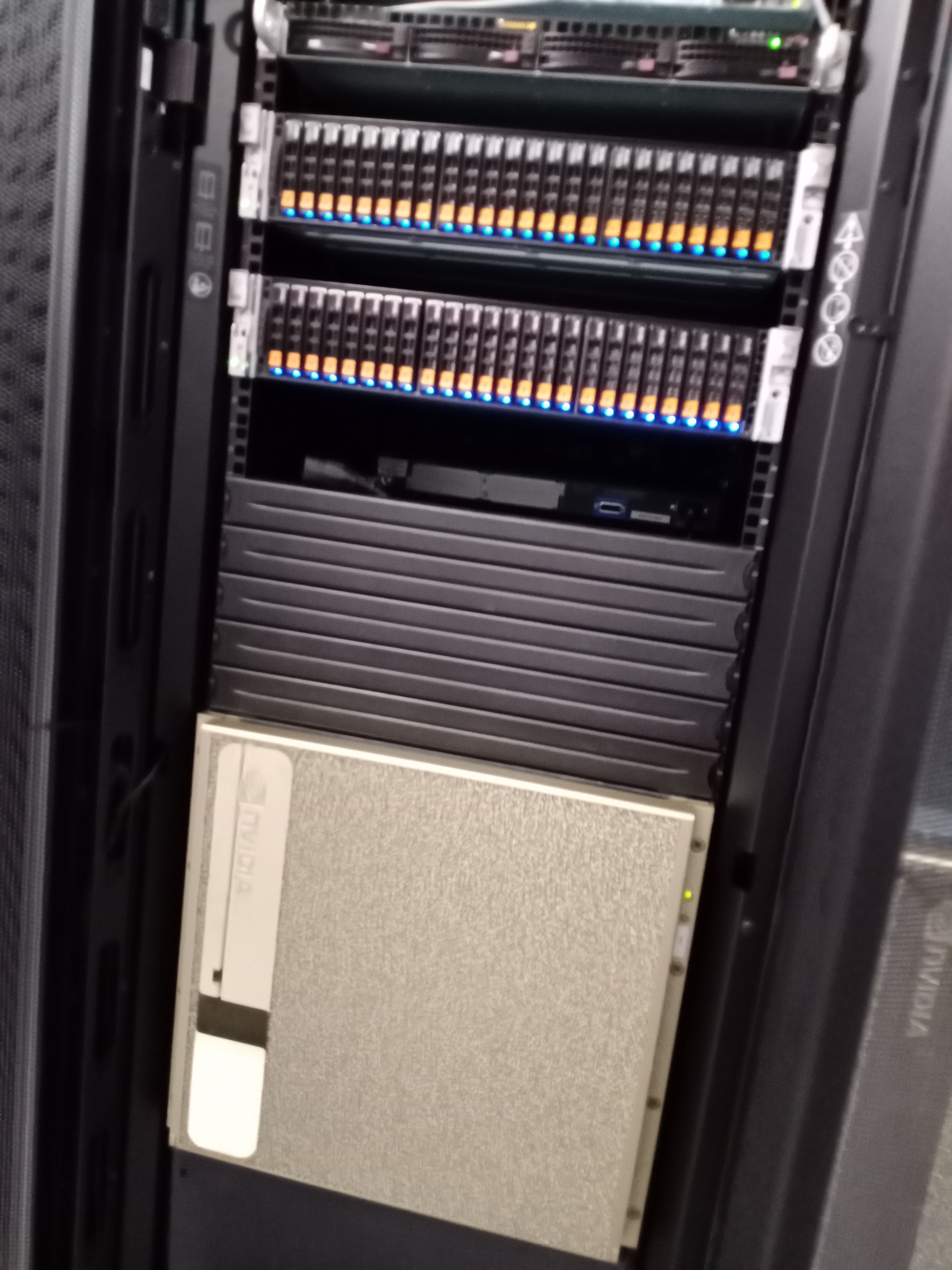One of the new GPU technologies is a small but exceptionally powerful AI system called PEARL, which is now available for scientists and researchers who form the 'AI for Science' community within the Alan Turing Institute and Science and Technology Facilities Council (STFC).
Named after the computational mathematician Judea Pearl, the PEARL system provides an extremely versatile service for its users. It  is hosted at the Rutherford Appleton Laboratory by STFC's Scientific Machine Learning Group (SciML), part of the Scientific Computing Department. PEARL contains two NVIDIA DGX2 nodes, 32 highly integrated GPUs, 3TB of system memory and 1TB of GPU memory, as well as 600TB of high-speed storage, which all are vital components for training complex AI models on very large datasets.
is hosted at the Rutherford Appleton Laboratory by STFC's Scientific Machine Learning Group (SciML), part of the Scientific Computing Department. PEARL contains two NVIDIA DGX2 nodes, 32 highly integrated GPUs, 3TB of system memory and 1TB of GPU memory, as well as 600TB of high-speed storage, which all are vital components for training complex AI models on very large datasets.
Dr Jeyan Thiyagalingam, SciML Group Leader, said, “For a small system, PEARL is incredibly powerful. It can perform 4 Petaflops per second – that's four quadrillion mathematic computations per second! And it makes it possible to train very complex AI models that have previously been difficult to train. For example, a model that would have taken 488 hours - or 20 days - to train on a single CPU will only take an hour on the PEARL system."
PEARL is funded by the Alan Turing Institute through its AI for Science Initiative, which covers the application and development of AI and Machine Learning techniques in analysing large-scale scientific datasets, particularly from experimental facilities.
%20(003).png)
STFC's Chief Data Scientist, Professor Tony Hey, said, “There is an opportunity here for us to use AI and Machine Learning to exploit the large volumes of data generated by the UK's national experimental facilities located here at the Harwell Campus, and from international projects like ATLAS and CMS at the Large Hadron Collider at CERN and the DUNE collaboration at the Fermi National Laboratory in the US. In addition, data from the new generation of international astronomy survey experiments such as the Square Kilometre Array and the LSST will absolutely require AI technologies to help analyse their massive data sets."
PEARL is already being used to carry out Machine Learning research for a wide array of projects in fields such as materials, environmental and life sciences, and astronomy.
Users of PEARL are mainly based within STFC and the Turing Institute. Potential new users working within the remit of AI for Science can apply for an account at https://www.turing.ac.uk/research/asg/pearl
